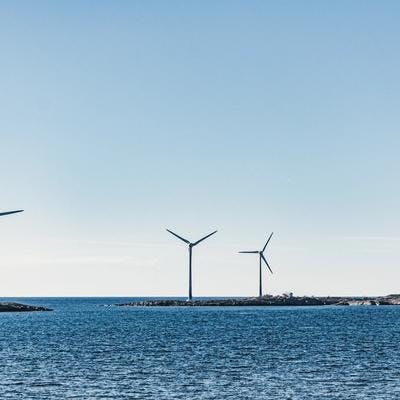
What are BRICS Countries?
BRICS is an acronym that stands for Brazil, Russia, India, China, and South Africa. These countries are recognised as emerging national economies with significant influence on regional and global affairs.
Ever since the term 'BRIC' was coined in 2001 by Jim O'Neill, a former economist at Goldman Sachs, to represent the four original members (Brazil, Russia, India, China), these nations have gathered annually for the BRICS Summit. South Africa joined in 2010, adding the 'S' to the acronym.
The Economic Significance of BRICS
The BRICS countries represent about 42% of the world's population and approximately 23% of the gross world product. They are considered significant growth markets and represent a substantial portion of the world's economic expansion.
In the table below, you can see the Gross Domestic Product (GDP) of each BRICS country to understand the size and scale of these economies.
| BRICS Country | GDP (in trillions USD) |
|---|---|
| Brazil | 1.44 |
| Russia | 1.47 |
| India | 2.62 |
| China | 13.41 |
| South Africa | 0.28 |
These figures underscore the potential these economies hold for investors. Although investing in BRICS countries might present unique challenges, the potential for high returns is significant. For more in-depth information on each country and the opportunities they present, keep reading the subsequent sections of this article.
By understanding the economic landscape of these countries, you can make more informed decisions about diversifying internationally and seizing global investment opportunities.
Why UK Investors Should Consider BRICS Countries
As a UK investor, diversifying international investments and tapping into the potential of emerging markets are strategies worth considering. The BRICS countries – Brazil, Russia, India, China, and South Africa – provide a wealth of opportunities.
Growth and Potential of BRICS Economies
The BRICS economies have demonstrated impressive growth rates over the past few decades. Your investments in these markets can potentially yield higher returns than in developed markets, given their rapid economic development.
| Country | Average Annual GDP Growth (2000-2019) |
|---|---|
| Brazil | 2.3% |
| Russia | 3.8% |
| India | 7.0% |
| China | 9.0% |
| South Africa | 2.7% |
These figures illustrate the growth potential that exists within these countries. For more insights on the potential of investing in emerging economies, you may want to read our guide on investing in emerging economies.
Diversification Opportunities
Investing in BRICS countries provides you with the opportunity to diversify your portfolio across a range of different economies and sectors. This can help to spread your risk, as the performance of your investments will not be solely dependent on the economic conditions in the UK or other developed markets.
For instance, you might consider investing in the technological advancements in China, the expansive digital economy in India, the rich natural resources in Russia, Brazil's agricultural sector or South Africa's mining industry. Exploring these different markets and sectors can add depth and variety to your investment portfolio.
Remember, diversification is a crucial strategy in managing investment risk. By spreading your investments across different countries and sectors, you can potentially mitigate the impact of a downturn in any one area on your overall portfolio. Learn more about the importance of diversification in our article on diversifying internationally.
In conclusion, investing in BRICS countries can be a strategic move for UK investors. The significant growth potential and diversification opportunities present in these markets can help enhance your portfolio's performance and mitigate investment risks. However, as with any investment decision, it's crucial to conduct thorough research and consider your individual financial goals and risk tolerance.
The BRICS Breakdown
Diving deeper into the world of BRICS investments, let's break down the unique opportunities and challenges each of these countries presents for UK investors.
Investing in Brazil
Brazil, the largest economy in South America, offers a myriad of investment opportunities. Known for its natural resources, robust agricultural sector, and burgeoning tech industry, Brazil's diverse economy can provide a wealth of options for investors seeking to diversify their portfolios. However, it's essential to stay vigilant about economic instability and political issues that may impact your investments. Be sure to conduct thorough research or consider investing in international ETFs that include Brazilian assets.
Investing in Russia
Russia, endowed with vast natural resources and a significant industrial sector, can be an attractive market for investors. It offers opportunities in an array of sectors, including energy, mining, and telecommunications. However, potential investors should be aware of geopolitical tensions and regulatory challenges that may influence the market. For a diversified exposure, consider investing in emerging economies that include Russia.
Investing in India
India, one of the fastest-growing economies in the world, presents robust opportunities for investment. With a rapidly expanding middle class, advancement in technology, and government initiatives promoting foreign investment, India's growth trajectory looks promising. However, you must consider the market volatility and regulatory hurdles that may come with investing directly in India. You can mitigate these risks by investing in international mutual funds that include Indian assets.
Investing in China
China, the second-largest economy globally, offers vast opportunities for investors. Its expansive manufacturing sector, burgeoning middle class, and rapid advancements in technology make it a compelling market. However, investors should consider the regulatory challenges and the potential impact of geopolitical tensions. Diversifying your investments through international ETFs that include Chinese assets can help manage these risks.
Investing in South Africa
South Africa, the most developed economy on the African continent, offers potential opportunities across sectors such as mining, manufacturing, and services. However, potential investors should consider factors such as economic instability and political risks. Diversifying your portfolio by investing in emerging markets that include South African assets can help manage these risks.
Investing in BRICS countries offers the potential for high returns but also comes with a unique set of challenges. It's important to have a clear understanding of these markets, be aware of the risks, and diversify your investments to mitigate potential losses. Always remember to keep an eye on your investments and adapt your strategy as the market evolves.
Risks and Challenges
While investing in BRICS countries offers considerable opportunities for economic growth and diversification, it's crucial to be aware of the accompanying risks and challenges.
Economic Instability and Market Volatility
Despite their rapid growth, BRICS economies can be susceptible to economic instability and market volatility. These can stem from factors such as changes in commodity prices, economic policy shifts, and swings in global investor sentiment.
For instance, fluctuations in oil and gas prices can have a significant impact on the Russian economy, due to its heavy reliance on these exports. Similarly, changes in domestic or global economic policies can create uncertainties in markets like India and China, leading to increased volatility.
Such instability can influence the returns on your investments in these countries, making it essential to monitor global economic trends and their potential impact on BRICS economies. For a deeper understanding, you might find our article on investing in emerging economies beneficial.
Political Risks
Political risks are another significant consideration when investing in BRICS countries. These can include changes in government, shifts in political policies, corruption, or geopolitical tensions.
For example, changes in trade policies or regulatory reforms can impact foreign investments. Political tensions or instability can also affect investor confidence, leading to market volatility.
Understanding the political landscape of each BRICS country, along with its relationship with the rest of the world, is crucial for mitigating political risks. Our article on global investment opportunities can provide further insights.
Regulatory Challenges
Regulatory challenges are another factor to consider when investing in BRICS countries. These can include issues related to corporate governance, transparency, legal protections for investors, and ease of doing business.
For instance, the regulatory environment in China can be complex and opaque, with frequent changes in rules and regulations. Similarly, issues related to corporate governance and transparency can pose challenges in countries like Russia and Brazil.
Understanding the regulatory environment and its potential impact on your investments is crucial. It's advisable to seek advice from professionals or use investment vehicles that can navigate these challenges, such as international ETFs or international mutual funds.
In conclusion, while investing in BRICS countries can offer significant opportunities, it's important to be aware of the associated risks and challenges. By understanding these factors and planning your investment strategy accordingly, you can make informed decisions and mitigate potential risks.
Strategies for Investing in BRICS Countries
When it comes to investing in BRICS countries, it's crucial to approach it strategically. A well-planned strategy can help mitigate risks and maximize returns. Here are three key steps to consider when developing your investment strategy.
Understanding the Market
The first step is to thoroughly understand the market dynamics of the BRICS countries. This involves studying their respective economies, understanding their growth drivers, and being aware of potential risks. It's also important to be familiar with the political, regulatory, and socio-economic factors that could influence your investments.
Look into the demographics, consumer trends, and the industries that are driving growth in these markets. For example, consider the rapid advancements in technology in China, or the thriving service industry in India. Being aware of these factors will enable you to identify lucrative investment opportunities and make informed decisions. For more insights on this, check out our article on investing in emerging economies.
Choosing the Right Investment Vehicle
Next, select the most suitable investment vehicle for your needs. This could range from investing directly in the stock markets of these countries to purchasing shares of an international ETF or international mutual fund that includes a diversified portfolio of BRICS-based companies.
Additionally, you might consider investing in global bond market investments, international real estate investments, or offshore investing as part of your strategy. The choice should align with your personal investment goals, risk tolerance, and investment horizon.
Monitoring Your Investments Regularly
Lastly, it's crucial to regularly monitor your investments. The economic and political landscapes in the BRICS countries can be volatile, and changes can occur rapidly. Regular monitoring allows you to react swiftly to any changes, whether it's taking advantage of a new opportunity or mitigating an emerging risk.
Stay updated with the latest economic news, market trends, and industry developments in these countries. This will help you make timely adjustments to your investment portfolio, if necessary. For more on this, check out our article on international stock market analysis.
Investing in BRICS countries can offer attractive returns, but it's not without its challenges. By understanding the market, choosing the right investment vehicle, and monitoring your investments regularly, you can navigate these challenges and make the most of the opportunities these markets have to offer.




